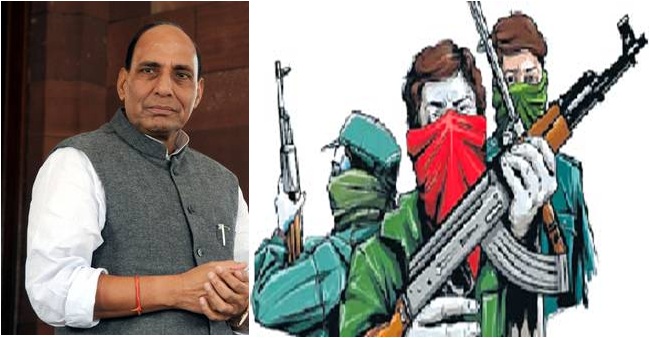Destruction of Secret Poppy – In yet another success for the Government of India and the Central Armed Police Forces against the Naxals, secret poppy cultivation worth crores of rupees has been destroyed throughout the year. In 2017-18, the Sashastra Seema Bal (SSB) managed to destroy illegal poppy cultivation of a mammoth 550 acres in Naxal affected areas of Bihar and Jharkhand. A total of 20 kilograms of poppy can be cultivated on one acre of land and the average production cost per kilogram is Rs. 1 lakh. Therefore, the total loss inflicted by the SSB comes to the tune of Rs. 55 crores.
The SSB used unmanned aerial vehicles (UAVs) to look for illegal poppy cultivations before destroying them. It is worth noting that among other things, poppy cultivation is one of the major sources of finance for Naxals finance.
It is believed that the Maoists are cultivating poppy in order to finance their activities in the Maoist affected regions, especially in their strongholds in Jharkhand, Chattisgarh, Odisha and Bihar. Since a single opium seed sells at Rs. 35,000 to Rs. 50,000 a cultivator can earn huge profits by cultivating poppy even on a few acres of land.
SSB’s role
Sashastra Seema Bal (SSB), which launched this offensive against secret poppy cultivation by the Naxals, is a Central Armed Police Force (CAPF) tasked with guarding Indo-Nepal and Indo-Bhutan borders. However, it has a considerable presence in the Naxal affected areas as well. Originally christened as the Special Services Bureau, its primary role was providing armed support to the Research & Analysis Wing (R&AW). Later, it was declared a Border Guarding Force.
Government’s persistent clampdown on Naxalites:
Modi Government’s revamped strategy and the Home Ministry’s counteroffensive against Naxalism seems to be bearing fruit as statistics show a continuous decline in Left Wing Extremism (LWE). There has been a continuous decline in the number of districts affected by Maoists as well as the number of states under the grip of violence perpetrated by Naxalism. While 75 districts spanning nine states were affected by Naxal violence in 2015, the number declined to 67 in 2016 and further down to 58 districts in 2017. 2017 is therefore touted as the best year for the Armed Forces engaged in combating Naxals.
Moreover, 90% of the attacks have taken place in Bihar, Jhakrand, Chattisgarh and Odisha, suggesting that Naxalism has been more or less confined to these states. Officials have attributed this success against the Naxals to a more proactive policy adopted by the government, which includes targeting top Naxal leaders and their informers with precise and enhanced intelligence. There has been an increased number of joint operations by the CRPF, the IAF, the BSF and the ITBP and the State Police Forces. Similarly, the local administration has sped up the process of development, including the construction of roads, installation of mobile phone towers and setting up of police stations in remote areas. This has broken the back of the insurgent movement. Naxals are now unable to move men, funds and ammunition as freely as before.
According to the information regarding Left Wing Extremism uploaded by the Ministry of Home Affairs (MHA) on its website, there has been a reduction in the number of Naxal attacks in all states except Andhra Pradesh. This suggests a general trend of waning Left Wing Extremism.
Former BSF DG Prakash Singh once stated, “You choke their (Maoist) finance and ammunition and they are finished.” The marked change in strategy for countering the Naxals seems to have taken the right path. The government is trying to counter the Naxals on all fronts including increased anti-Naxal operations, increased developmental work and as evident by the current onslaught on poppy cultivation, choking Naxal finance. It is not possible to wage a war against the state if there are no financial resources to sustain the kind of ammunitions that the Naxals have amassed. Therefore, the offensive carried out by the SSB can be considered a turning point in the fight against Naxalism.
